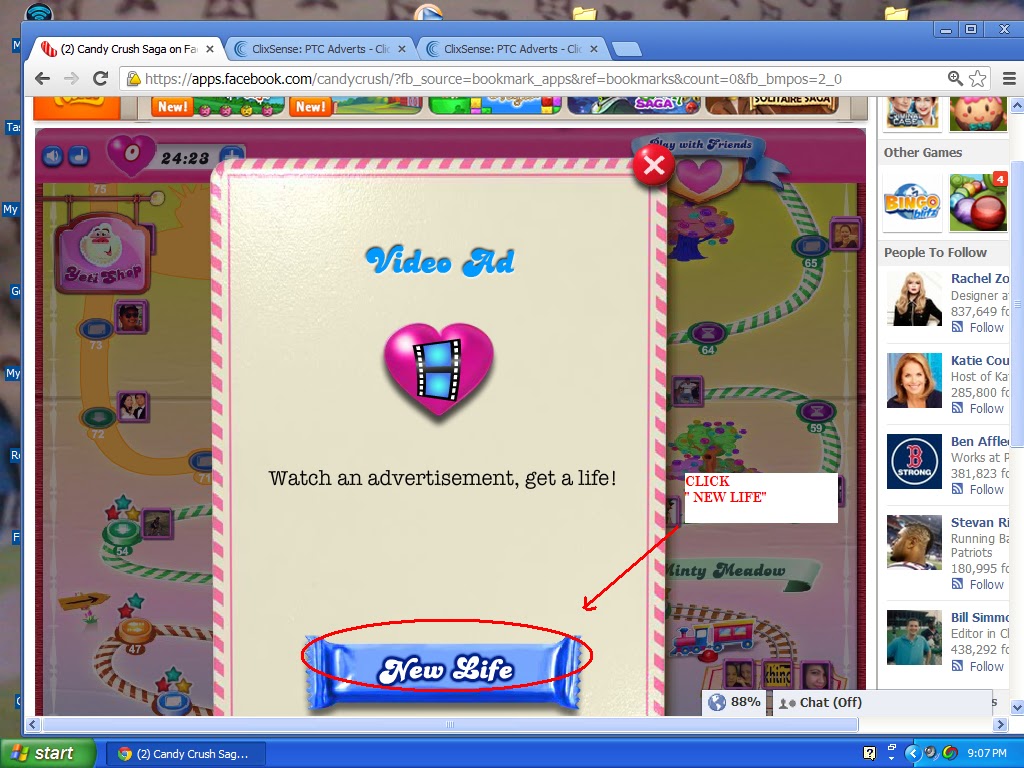CANDY CRUSH is one of Facebooks featured games that became a hit. So addicting to the point that your turning into an insomaniac for wanting to finished your present level.
Problems that you may encounter at this game is moving forward to the next level :
1) a TICKET wherein you need 3 friends to give you ticket and another
2) is that you have "0" zero life and need to wait for few minutes for your life to be filled or to ask help from your friends.
I wan't to share a solution to your problem and just follow the procedures below:
- Once you click the "TRY AGAIN " button this will appear
- A new window will appear hit the "NEW LIFE" button

- A new window will appear with advertisement. Just wait for the RED "X" to turn GREEN then hit the "X" button.
- Click on your present level, You will notice that 1 life is added . And that's it! you can play for another round of CANDY CRUSH, Do the above procedure and you can play as long as you want.
NOTE : If ever the new window appear out of the ordinary just hit the "x" button and REPEAT the procedure again till life is added.
Happy gaming! Enjoy!

















